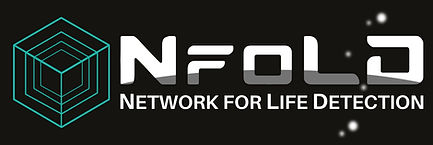ECC Member Spotlight: Osama Alian
- Sean Brown

- Oct 25, 2023
- 2 min read
For our ECC Member Spotlight for October, we are highlighting Osama Alian from Michigan State University! He is a member of our Early Career Council Leadership Committee and helps create and guide activities for our early career scientists!
Who I am:
I’m a PhD candidate at Michigan State University, working with Dr. Matthew Schrenk on varied questions in geomicrobiology and astrobiology.
What I do:
My work has focused on teasing apart the microbial communities inhabiting the Lost City hydrothermal vents of the Mid-Atlantic Ridge and their micro-environments. Serpentinite-hosted systems like Lost City are thought to be fairly common in the universe, with evidence of their activities found from Mars to Enceladus and they’ve been thought of as likely candidate environments for prebiotic chemistry and the origin of life. As opposed to black smoker vents, which are driven by magmatism, serpentinization reactions between water and rock drive Lost City-type systems primarily making it a chemical system producing key gasses such as hydrogen and methane in addition to high temperatures. As such, studying locations like Lost City as analogs for both an early Earth and places beyond Earth is crucial for understanding the myriad of complexities driving these long-lived ancient systems. While much work has been done to characterize the geochemistry and microbiological composition of the site, there are still many questions on how the microbes or their communities are practically utilizing resources where the conditions are relatively extreme in temperature and alkalinity, and austere due substrate limitations. To understand how microbes overcome this, we’ve focused our efforts on spatially mapping the microbes within the vents relative to their mineralogical and elemental associations. This not only has given us a new view into the organization of these microbes relative to their surface interfaces but uncovered a large degree of complexity in their microenvironment that may not be captured with traditional bulk analyses. The spatial context provided by this kind of mapping has also uncovered some patterns of both elemental and mineral distributions that may themselves be indicative of biological activity and not just natural abiotic precipitation processes driving the physical vent formation. By identifying and understanding the makeup of these micro-environments where microbes are found and the patterns associated with their presence we are providing a spatial context to habitability within Lost City hydrothermal vents, as well as identifying possible biosignature patterns from their activities possibly preserved within the hydrothermal vent walls. Together, this will provide a valuable framework from which to examine similar environments beyond Earth.
Why I enjoy doing NfoLD things:
NfoLD is a very interdisciplinary collection of folks who do a large array of exciting work. There’s a constant stream of new things to learn that catalyze either new ideas or potential applications to work on in the future. Meeting and having conversations with other early career members also creates a nice community of like-minded scientists who are potential future collaborators, and it’s really nice to be able to see along the whole spectrum from the early career to the highly accomplished senior scientist the incubation and application of ideas and projects.

Commenti